Affiliate links on Android Authority may earn us a commission. Learn more.
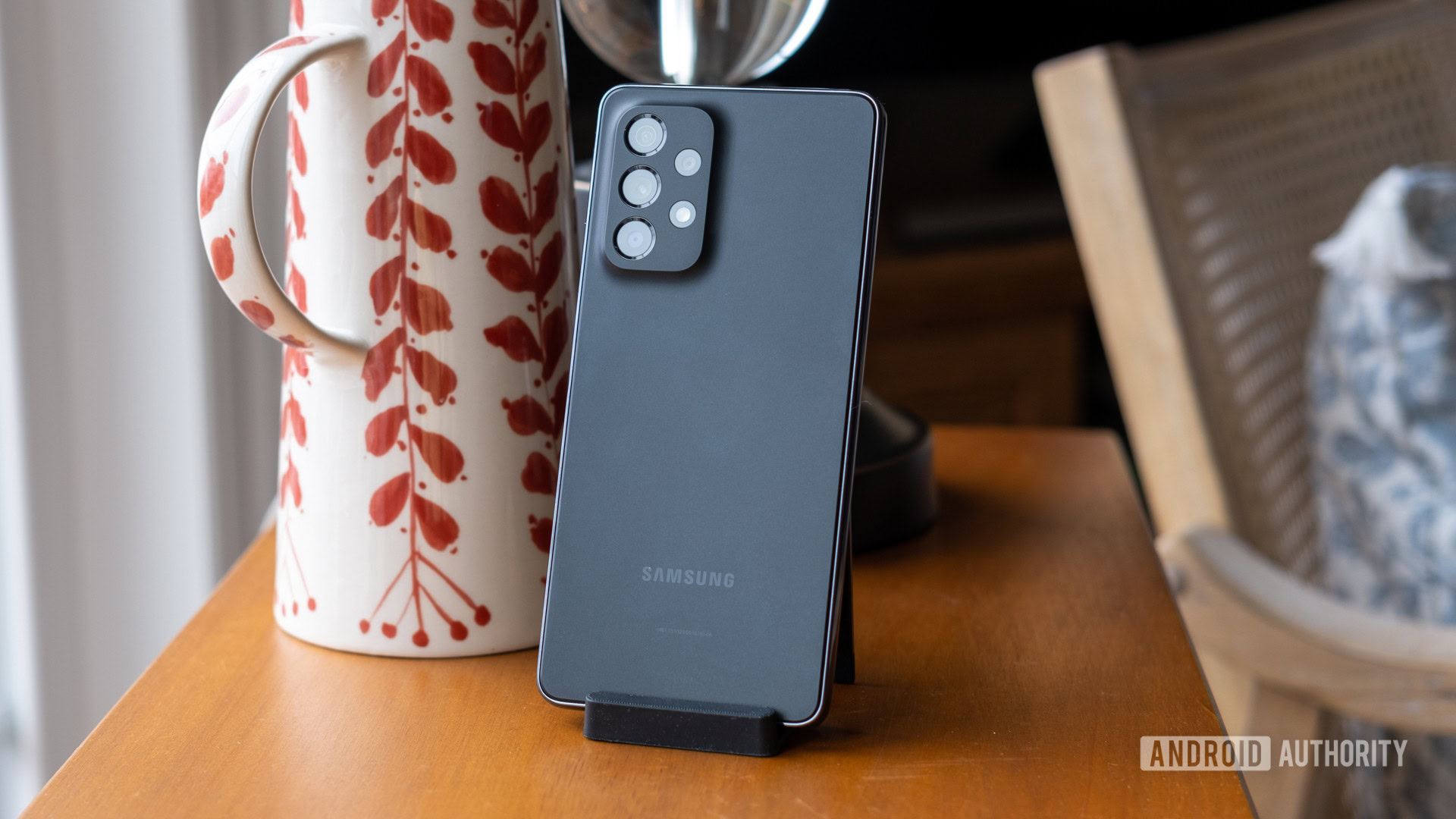


Samsung Galaxy A53 5G
MSRP:
What we like
What we don't like
Our scores

Samsung Galaxy A53 5G
Samsung is going all-in on mid-range excellence. It set the bar high in 2021 with the well-rounded Galaxy A52 5G, and we’ve been waiting patiently to see what its successor has in store. Now, we know. The Samsung Galaxy A53 5G looks and feels like its predecessor, but its subtle upgrades should keep it among the best budget phones. Competitors have had a year to catch up, so are the minor upgrades enough to stay ahead? Find out in our Samsung Galaxy A53 5G review.
Update, May 2023: Added information on recent software updates as well as new alternative devices.
What you need to know about the Samsung Galaxy A53 5G
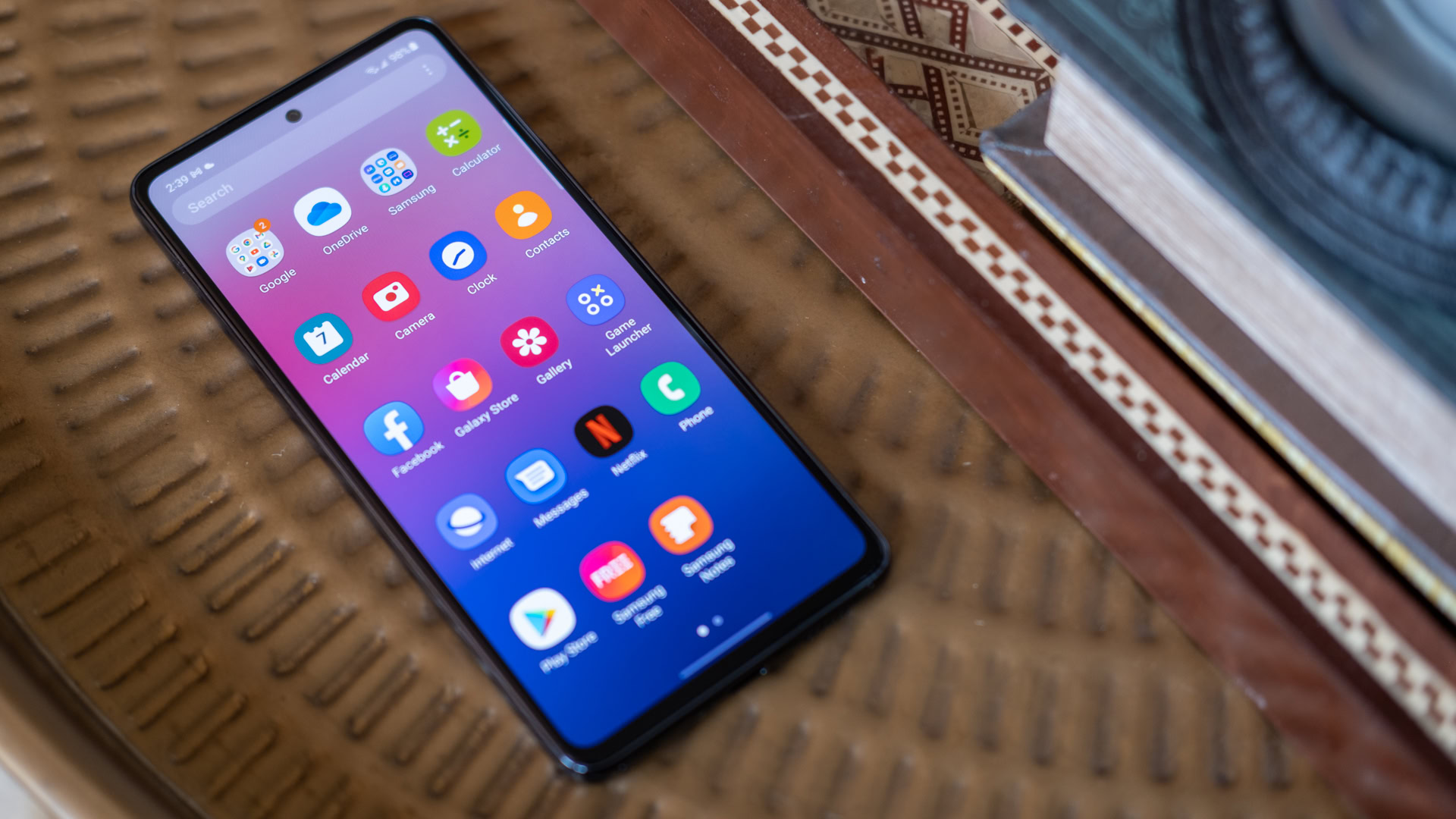
- Samsung Galaxy A53 5G (6GB/128GB): $449 / €449 / £399
- Samsung Galaxy A53 5G (8GB/256GB): $559 / €509
The Samsung Galaxy A53 5G is the follow-up to 2021’s highly successful Galaxy A52 5G and Galaxy A52s (though the latter did not launch in the US). It doesn’t offer too many changes from its predecessors, yet Samsung seems to have refined its popular Galaxy A device in many of the right ways. For starters, it’s $50 more affordable. You can now pick up the 6GB of RAM and 128GB of storage configuration for just $449. There’s also an improved version with 8GB of RAM and 256GB of storage, though it’s tougher to track down in most markets. No matter which model you choose, you can tap into the microSD card slot to boost your storage.
You’ll get a 6.5-inch Super AMOLED display, which matches the previous Galaxy A52 5G. It’s plenty sharp, with a Full HD+ resolution and a 120Hz adaptive refresh rate. The display is made from Gorilla Glass 5, though the back panel of the Galaxy A53 5G is plastic. It is also IP67 certified for protection against water and dust.
Samsung upgraded its mid-range device to a 5,000mAh battery (up by 500mAh) but retains 25W wired USB Power Delivery charging. The cameras haven’t changed either, with a 64MP primary lens as the star of the show. It also offers 12MP ultrawide, 5MP macro, and 5MP depth lenses for extra flexibility, though again all of these are identical to the previous generation phones.
Samsung made small upgrades to the battery and processor, refining rather than reinventing.
The Galaxy A53 5G does follow an unfortunate trend for budget phones in recent years — you get less in the box than ever. Samsung no longer includes a charger with budget devices, just a USB-C cable and a SIM ejector tool. You get some essential startup paperwork, too, but that’s about it.
Samsung’s Galaxy A53 5G takes on tougher mid-range competition than ever before. It’s more affordable than the Google Pixel 7a and offers a similar overall experience. Both devices pack flexible cameras, long-lasting batteries, and class-leading update commitments, but the Pixel adds wireless charging to the mix. Samsung has introduced a replacement to the Galaxy A53 in the form of the Galaxy A54, too. It simplifies the camera setup and shifts to a more Galaxy S23-inspired design. It’s also only $150 shy of the excellent Google Pixel 7, or just a mere $40 if you opt for the larger storage Galaxy A53 5G model. If you’re torn between Android and iOS, the iPhone SE (2022) is the most similar device in Apple’s lineup. It lags on the hardware front, but the A15 Bionic gives the tiny device an impressive performance boost.
The Samsung Galaxy A53 5G is easy to track down at most top retailers, including Amazon and Best Buy. Color options for the mid-range device include Awesome White, Awesome Black, Awesome Blue, and Awesome Peach.
Has the design changed at all?
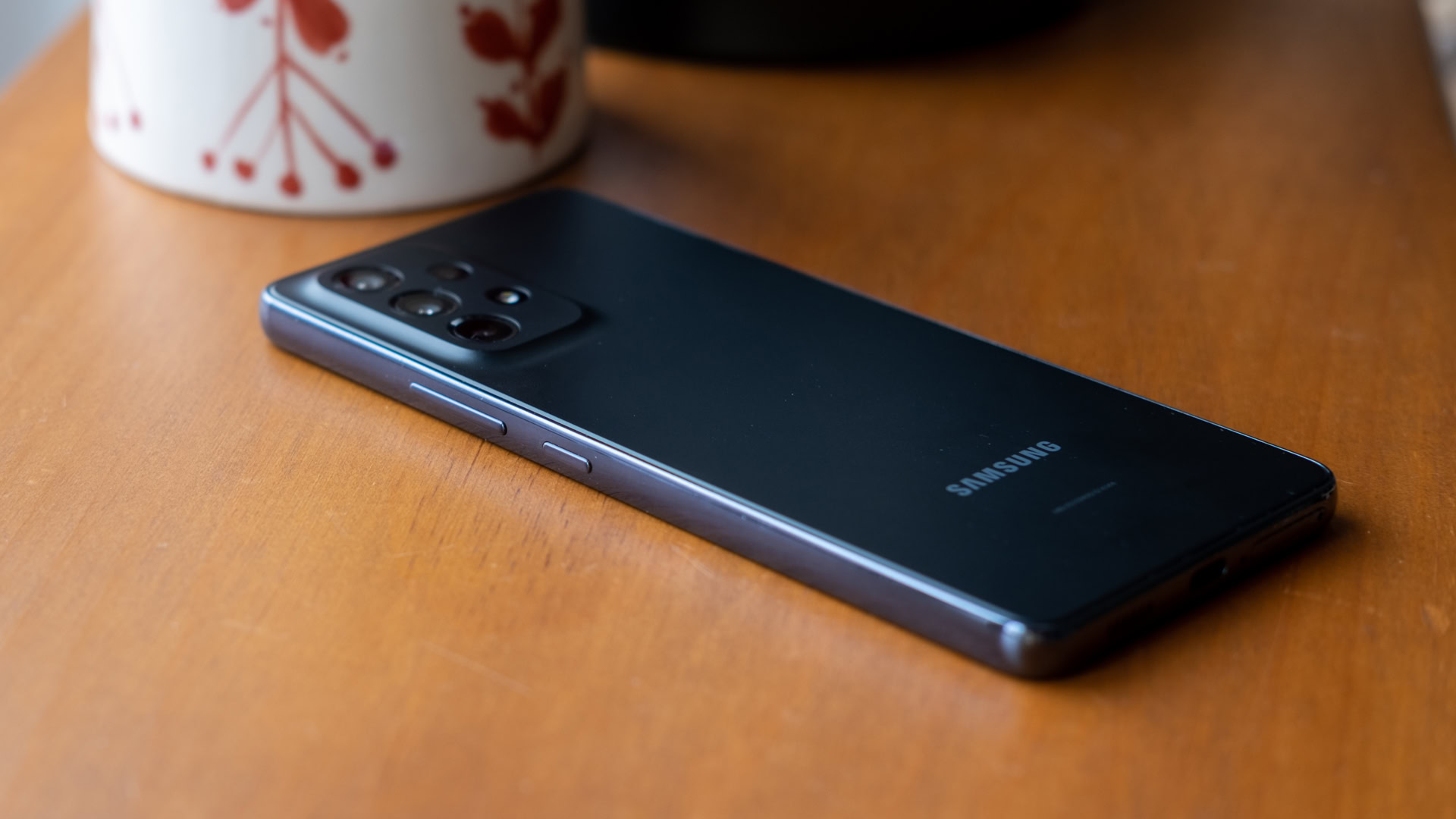
The Samsung Galaxy A53 5G leaves little question as to its lineage. It’s almost identical to its predecessor, save for a few millimeters here and there. Honestly, the lack of change isn’t a bad thing for this device — especially as it’s not nearly as dated as its most high-profile competitor, the iPhone SE (2022). The ports, buttons, and cameras are all in familiar spots, so it’s easy to pick up and go. The only questionable choice is the placement of the microphone, which is wedged between the left-sided SIM tray and USB-C port on the bottom edge. Be careful where you place your ejector tool!
Even the Galaxy A53 5G’s matte plastic back panel feels like a familiar carryover from last year. It’s not as premium as glass, but it’s resistant to pesky fingerprint smudges and comes in four “Awesome” shades: Black, White, Blue, and Peach. The plastic carries seamlessly into the camera housing, which is slightly raised but still feels minimal.
The plastic back isn't as premium as glass, but the new colors still look and feel 'Awesome.'
The Galaxy A53 5G is a tall device, but that’s to be expected with the large display. It stands a few millimeters taller than the Galaxy S21 FE, and just a shade over the Pixel 6. Samsung’s mid-range option is as wide as Google’s affordable flagship, too — both measure 74.8mm. The 189g weight feels solid in hand but not overly heavy. It’s no thicker than last year, but the metal side rails make the Galaxy A53 5G feel right at home alongside Samsung’s top-of-the-line Galaxy S22 family. Samsung has been flattening its edges to make phones more comfortable to hold, making what is unquestionably a large phone feel a lot more usable.
The phone packs an impressive 6.5-inch Super AMOLED panel, the same as you’d find on the previous Galaxy A52 5G. It’s a classic case of not fixing something that isn’t broken. You get a sharp Full HD+ resolution, a smooth 120Hz adaptive refresh rate, and up to 800 nits of peak brightness. Although the display is adaptive, it remained at 120Hz for the duration of my testing, and almost never dropped to 60Hz. You can also lock the display to 60Hz in the Motion Smoothness menu to save battery, but I never found battery life to be an issue.
There are thin bezels on all four sides, though the top and bottom are slightly thicker. The only interruption comes from the central punch hole selfie camera, which is small enough to be easy to ignore when streaming your favorite shows. It will cut into your picture slightly if you zoom in to fill the display, but Samsung’s default video playback hides the camera in a black bar. The Galaxy A53 5G’s selfie camera also has a tiny silver ring around it. However, it’s not much more noticeable than the edge of a screen protector would be.
One of Samsung’s most noticeable changes for the Galaxy A53 5G is the disappearance of the headphone jack. It’s slowly been fading from budget devices, and this time it’s likely been sacrificed in favor of some extra battery capacity (more on that later). The overall build quality and durability haven’t changed, however. This is still a very well-made phone.
How good is the Samsung Galaxy A53 5G’s camera?
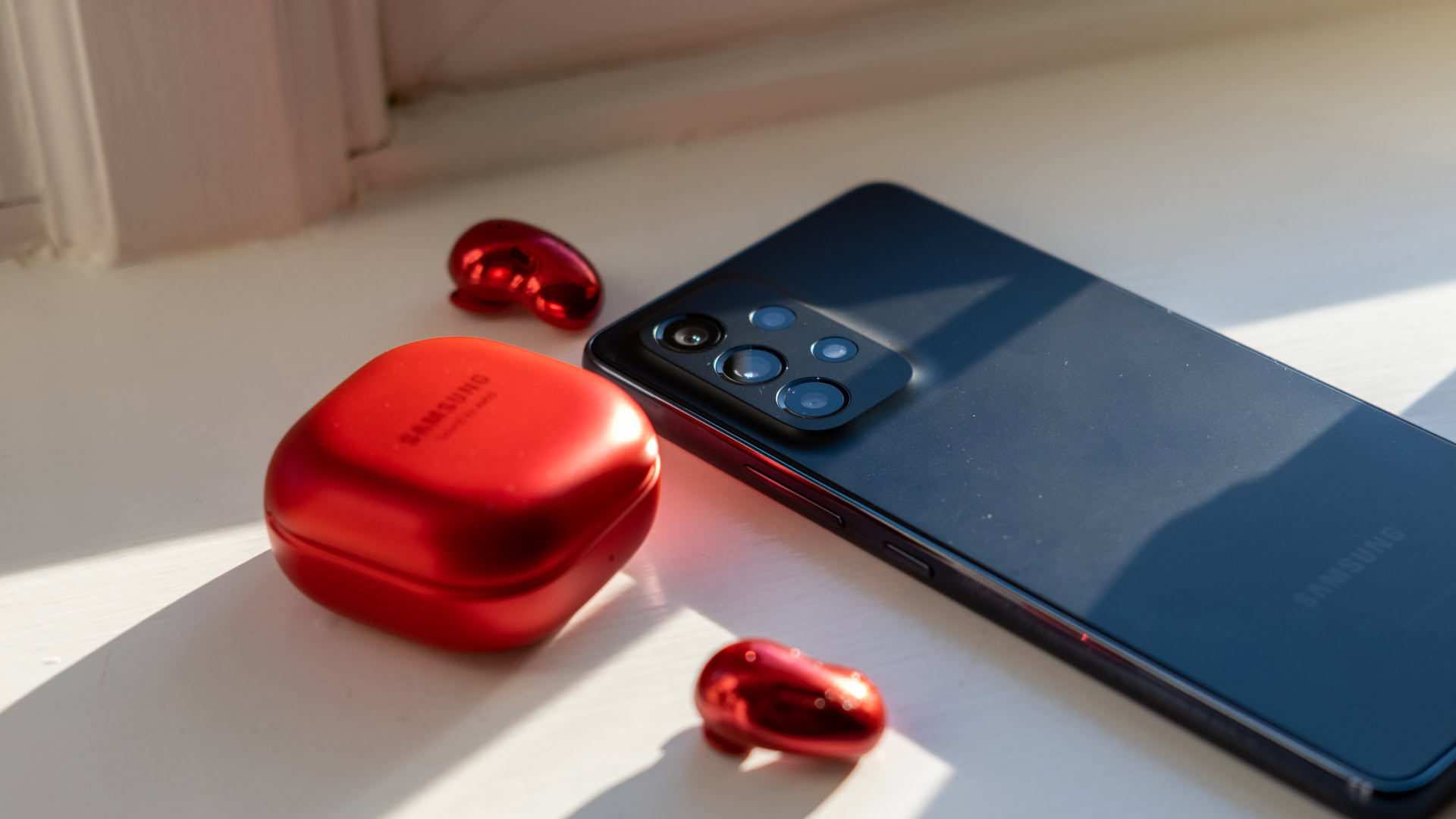
We mentioned that Samsung hadn’t changed the camera from its Galaxy A52 5G, which, much like the familiar design, is not a bad thing. It remains one of the best budget cameras around. The 64MP primary sensor captures great images across the board, and it offers plenty of shooting modes to flex your creativity. It bins down to 16MP images by default, but it’s easy to toggle back to full-resolution shots. You also get a 12MP ultrawide sensor with a 123-degree field of view, a 5MP macro lens, and a 5MP depth sensor to round out the setup.
I found myself relying on the primary and ultrawide sensors for the most part, but the macro lens can hold its own if you really dig close-up shots. It’s certainly a step above the 2MP options you’ll find on many budget phones.
There are plenty of shooting modes to test out, but one of the more unique options is simply called Fun. It works just like a Snapchat filter — identify a nearby face and choose which filter you want to apply. I’m not sure how useful it is outside of Snapchat itself, but you could probably get a laugh out of your kids without having to send your selfie anywhere.
Samsung’s 64MP primary lens provides the bulk of the Galaxy A53 5G’s muscle, and it’s on display in most of the images above. The image of a lantern, for example, was taken point-and-shoot with the camera’s natural bokeh instead of a portrait effect. I found that the phone had no problems recreating the colors I saw with my eye, especially in the case of the Easter decorations. The pastel shades didn’t wash out, and while Samsung’s cameras always err on the contrasty side, I didn’t notice any of the oversaturation that has plagued Samsung cameras in the past.
You can apply portrait effects to almost anything with the Galaxy A53 5G, but the edge detection isn’t always perfect on objects. In the image of a lamppost, the phone correctly identified the building in the background, but it struggled with some of the branches on the yellow plant. It was more effective on the image of a drink, but still not perfect — take a look at the rim of the other glass in the picture.
Photos taken by the Galaxy A53 5G avoid the oversaturation that has plagued Samsung cameras in the past.
The 5MP macro lens feels more like a fun extra than a practical lens. It delivers some solid results, but you have to hold the phone incredibly still, and the use-cases are a bit more limited than a telephoto lens might have been. Of course, telephoto lenses aren’t the most common on sub-$500 devices, but it’s one thing that could have made the setup more effective and raised the stakes for mid-range phones. If you’re not planning to take close-ups of flowers or small objects, you may find that you forget the macro camera altogether.
The main case for including a telephoto lens over a macro option comes when you start to zoom as it’s all done digitally. I had no problem with standard images, and the 2x zoom works well enough on the Galaxy A53 5G with some massaging from Samsung’s post-processing. However, once you punch in to 4x zoom or 10x zoom, the quality drop is noticeable. Although the Galaxy A53 5G’s main camera offers OIS, it doesn’t provide the same stabilization you get with a premium Galaxy S22 flagship, so you’ll need steady hands if you use zoom often. In the shots above, the details in the trees are significantly softer once you reach 10x zoom.
Samsung’s Galaxy A53 5G also offers an impressive ultrawide shooter. The 12MP resolution is plenty sharp, and I didn’t notice much distortion jumping from standard zoom to ultrawide. The colors remained consistent between both cameras, and I could capture more of the restaurant I was at without issue. However, the ultrawide lens doesn’t offer night mode support, which might be its only major drawback. The ultrawide lens also struggles a little bit in low light situations — the darker areas under the bar are noisy compared to the primary camera.
Having recently tested the iPhone SE (2022), a phone that does not have a night mode, I was ready to test Samsung’s mode on just about everything with the Galaxy A53 5G as a palette cleanser. I took the image of the Coca-Cola ad in an alley, and the colors are spot-on. The Galaxy A53 5G might not have the fastest night mode shutter speed around, but it doesn’t hurt the image quality. The images to the right were taken at an outdoor bar, again with good results. I tried to capture the neon sign both with and without night mode and found that the night mode image gave better colors and matched what I saw. A few of the flowers suffer from some overprocessing, but the colors remained accurate.
The 32MP selfie camera follows the primary camera’s lead, binning images down to 8MP by default. You can always jump back to a full-resolution shot, but I had no complaints with the image quality. My standard selfie is sharp with good color recreation, and the portrait mode selfie only puts a few hairs out of place. Edge detection is much better on people than on objects, with my hat and shirt coming through cleanly.
While the lack of upgrades elsewhere isn’t a dealbreaker considering the results, the lack of any updates to the Galaxy A53 5G’s videography is a real concern. The Galaxy A53 5G remains content to offer 4K at 30fps on both front and back, which at this point is now falling well behind the competition. Google’s Pixel 5a, for example, supports 4K at up to 60fps, and the iPhone SE (2022) offers the same. Apple’s single-lens also packs 1080p support at up to 240fps while the Galaxy A53 caps itself at 60fps. Considering Samsung’s Exynos chip powering the phone is perfectly capable of 4K/60fps, this is a head-scratching decision.
How is the battery life? What about the charging?
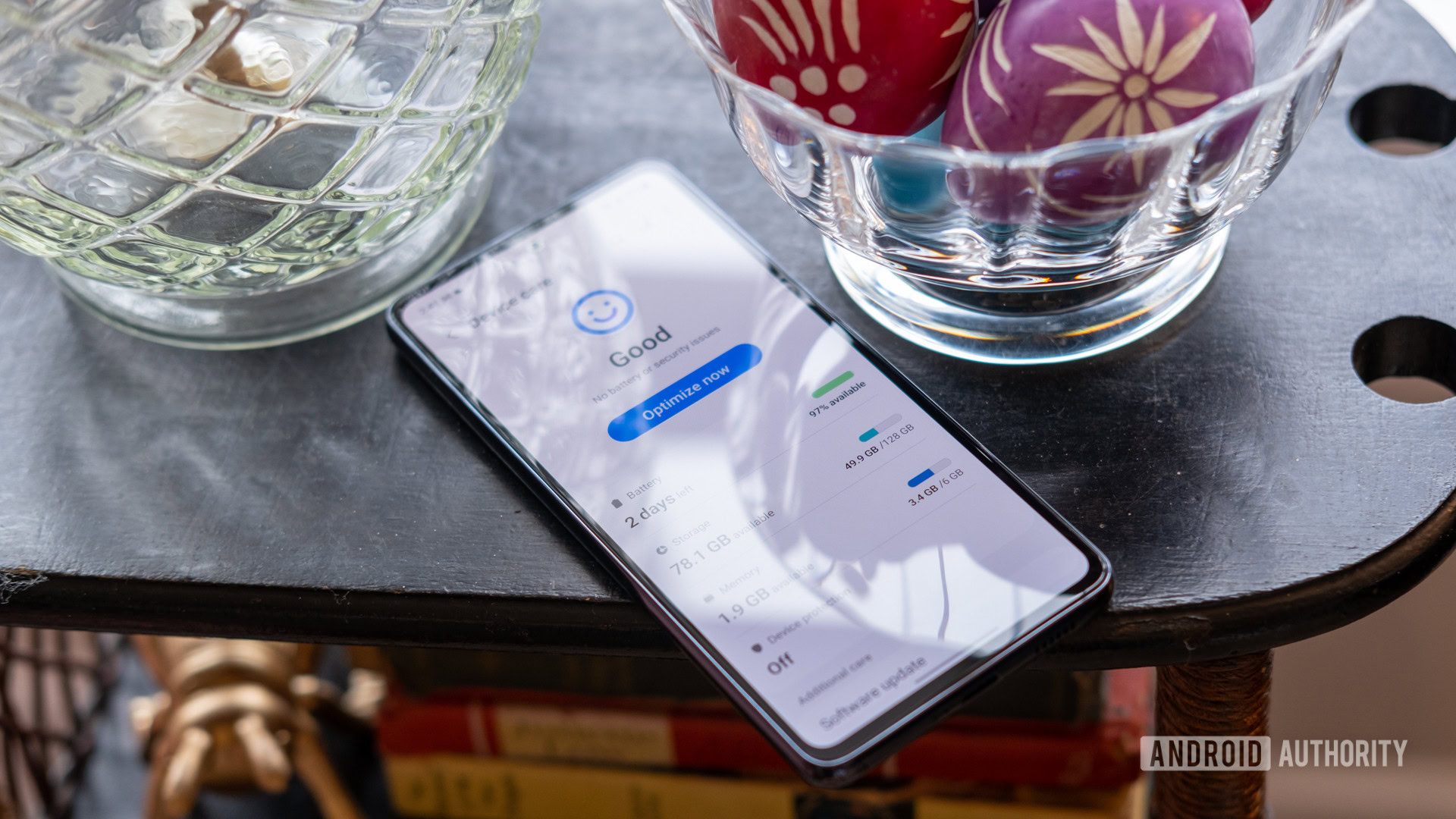
After shrinking the cells on some of its Galaxy S22 flagships, Samsung seems to have settled on the idea that bigger is indeed better at least when it comes to its budget phones. The Galaxy A53 5G’s battery picked up an extra 500mAh over the previous model’s capacity, bringing it to a nice, even 5,000mAh. It’s in line with the cell you’d find on the high-end Galaxy S22 Ultra, and you’ll find no complaints about battery life here.
I managed to stretch the Galaxy A53 5G’s battery through almost two days of regular usage without issue during my testing. I often finished the first day with between 40% and 50% remaining and didn’t have to search for a charger until late on the second day. The battery life was particularly impressive given what the Galaxy A53 5G includes. Crisp displays, high refresh rates, and 5G connectivity often spell doom for battery life, but the 5,000mAh cell pushed right on through. Some of the longevity comes from the lower-power processor that sips power rather than chugs it.
The Galaxy A53 5G sips, rather than chugs, power from its hefty 5,000mAh cell.
Of course, if you’re hitting GPS navigation pretty heavily or spending hours in a title like Genshin Impact or Asphalt 9, you’ll see worse results, though we didn’t encounter any issues with overheating.
Once you finally drop the battery to zero, you can get the Galaxy A53 5G back up and running again with 25W wired charging. It relies on USB Power Delivery PPS, so make sure you’re using a compatible charger — otherwise, you’ll top out at 15W. There’s no charger in the box, so you may have to shell out a few extra bucks for a new one.
The power aligns with what Samsung offers on its flagship Galaxy S22, though the Galaxy A53 5G has a much larger battery to fill. It took about 85 minutes to fully charge with a compatible brick, which is a fair time considering the size of the battery. It’s certainly faster than the Pixel 5a, and while it lags behind the iPhone SE (2022)’s brisk one-hour recharge time, Apple’s budget phone has a much smaller cell that doesn’t stretch too far beyond a day of reasonable use.
How well does the Samsung Galaxy A53 5G perform?
Sometimes, a device can benchmark pretty well but not be all that enjoyable to use. Other times, the daily experience far outweighs modest numbers. The Samsung Galaxy A53 5G falls comfortably into the second category.
The Galaxy A53 5G’s in-house Exynos 1280 processor handled daily tasks like email, browsing, and social media without issue, but I did notice occasional stuttering if I pushed the phone harder. Bouncing between Spotify and active navigation sometimes cost a second here or there before the Galaxy A53 5G righted itself again. It took quite a while for me to fire up the ever-demanding Genshin Impact the first time around and I noticed minor stuttering as the world loaded and occasional frame rate drops, but nothing that significantly impacted gameplay.
As for thermals, the Galaxy A53 5G had no problems remaining a cool customer under my daily load. I only really noticed temperature changes if I kept GPS navigation running for an extended time or when downloading large apps and games.
The Galaxy A53 5G's benchmarking numbers underwhelm, but the everyday performance is acceptable.
Samsung’s Exynos 1280 is a mid-range chip, and the benchmark numbers back that up. We ran our standard slate of AnTuTu, Geekbench, and 3DMark tests with modest results. The new 5nm processor does outperform the 8nm Snapdragon 750G found on the previous Galaxy A52 5G. It doubled its 3DMark Wild Life result, which should provide more stable gaming performance. The single-core Geekbench 5 score also improved by about 13% over the 2021 model, and the multi-core score rose nearly 4%. You’re not likely to notice the modest gains in everyday usage, but the single-core score should make apps a little more responsive.
While the Galaxy A53 5G offers improvements on its predecessor and its close competitor, the Pixel 5a, it does, however, fall behind the Galaxy A52s that launched outside the US with a Snapdragon 778G chip. The numbers also pale in comparison to the iPhone SE (2022). Apple’s affordable iPhone carries a full flagship chipset, which puts up excellent benchmark numbers. It’s the faster of the two phones, especially as you push it harder. By comparison, we saw zero stuttering or loading issues with Genshin Impact on the iPhone SE (2022).
The Samsung Galaxy A53 5G offers a solid base configuration of 6GB of RAM and 128GB of storage. There’s a 256GB model if you need extra storage right out of the gate, but you can tap into the microSD slot instead. The higher storage version also boosts RAM from 6GB to 8GB, offering a little more punch for your daily tasks.
Anything else?
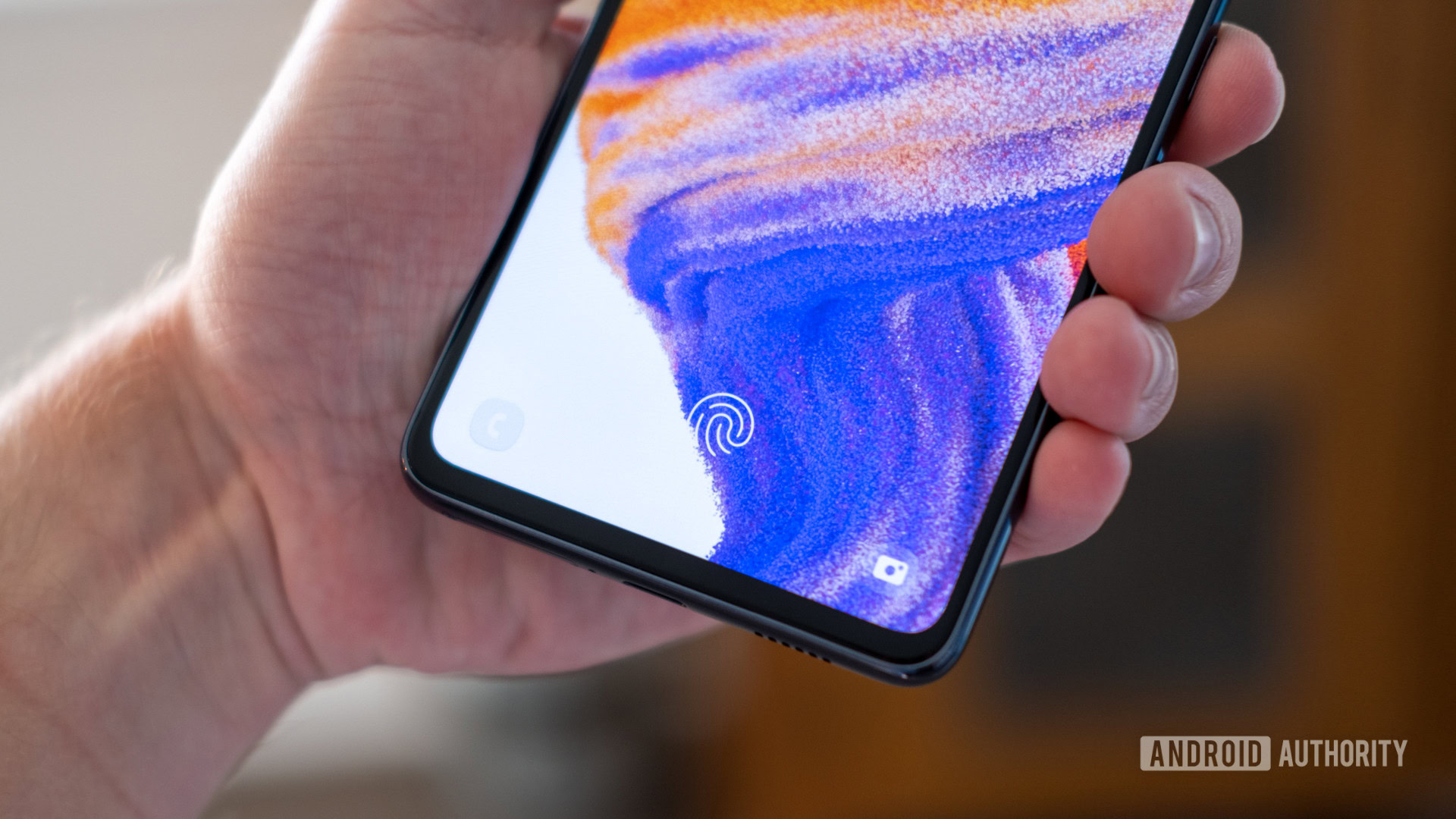
- Biometrics: The Samsung Galaxy A53 5G packs an optical in-display fingerprint sensor. It’s not as fast or as accurate as its ultrasonic cousins on premium Galaxy phones, but I had no issues during my testing. However, the fingerprint reader sits very low on the display. It’s only about a centimeter above the bottom edge, so you may have to train your thumb to reach lower than normal.
- Updates: Samsung’s update policy is impossible to beat among Android competitors. While some Galaxy A devices are set to receive three years of Android updates and four years of security patches, the Galaxy A53 5G follows Samsung’s flagship promise. That means it’ll receive four years of version updates and five years of security coverage — good enough to carry the phone until 2027. That’s better than even Google.
- Software: The Galaxy A53 5G ran on Android 12 with Samsung’s One UI 4.1 skin for the duration of my testing. It’s the best version of One UI so far, with plenty of customization options for your app icons and widgets. Everything is easy to navigate, with the app drawer just a swipe away. However, Samsung still includes a handful of duplicate apps on its new devices, including Samsung and Google versions of most apps and a few Microsoft options like OneDrive, Office, and LinkedIn. You can uninstall some of these, but OneDrive is here to stay. It has since received monthly security patches through March 2023 to address vulnerabilities, as well as Android 13 and One UI 5.
- Audio: The Samsung Galaxy A53 5G packs stereo speakers, and they perform pretty well but lack a bit of bass. It combines the earpiece with a down-firing unit, and I didn’t notice any distortion until I raised the volume to its highest level. At that point, you’re better off with a Bluetooth speaker anyway. The Galaxy A53 5G also ditched the headphone jack from its predecessor, so you’ll need USB-C headphones or a trusty Bluetooth pair.
- 5G: Samsung’s Exynos 1280 chipset comes ready for 5G speeds, and I had no trouble connecting to the Verizon network. The mid-range processor is compatible with sub-6GHz networks, but you won’t find mmWave support on the unlocked version. It’s not a surprise for a budget phone, and it likely won’t make a difference if you live outside of a major city or outside of the US. If you’re a Verizon customer, you can pick up a mmWave-enabled version, but it’ll cost you an extra $50.
- Connectivity: The Samsung Galaxy A53 5G skips the latest networking options in favor of older technology. It arrives with Bluetooth 5.1 and Wi-Fi 5 onboard rather than Bluetooth 5.2 or Wi-Fi 6 or 6E. Of course, this is a $449 device, so the included standards tend to match what you pay for, though it is strange that the Galaxy A52s had support for Wi-Fi 6. You do, however, get NFC support, so Samsung Pay or Google Pay will work like a charm.
Samsung Galaxy A53 5G specs
| Samsung Galaxy A53 | |
|---|---|
Display | 6.5-inch Super AMOLED Flat display 20:9 aspect ratio FHD+ resolution (2,400 x 1,080) 120Hz refresh rate |
Processor | Exynos 1280 |
RAM | 6GB or 8GB |
Storage | 128GB or 256GB MicroSD card support |
Power | 5,000mAh battery 25W wired charging No charger in box |
Cameras | REAR: - 64MP wide (0.8μm, ƒ1.8, 26mm) - 12MP ultrawide (1.12μm, ƒ2.2, 123-degree FoV) - 5MP macro (ƒ2.4) - 5MP depth (ƒ2.4) FRONT: - 32MP wide (ƒ2.2, 26mm) |
Video | REAR: - 4K at 30fps - 1080p at 30/60fps FRONT: - 4K at 30fps - 1080p at 30fps |
Audio | Stereo speakers |
Connectivity | 5G (sub-6GHz) Wi-Fi 5 (a/b/g/n/ac) Bluetooth 5.1 NFC support |
Security | Optical under-display fingerprint sensor |
Software | Android 12 One UI 4.1 |
S Pen support | No |
Materials | Gorilla Glass 5 front Plastic back Metal frame |
Durability | IP67 certified |
Dimensions and weight | 159.6 x 74.8 x 8.1mm 189g |
Colors | Awesome Black, Awesome White, Awesome Blue, Awesome Peach |
Value and competition
The Samsung Galaxy A53 5G starts at $449 in the US, which positions it against some of the best budget phones you can buy. It packs almost everything you could ask for in that price bracket, with a large, sharp display and a long-lasting battery. While the phone isn’t perfect — the middling processor and lack of 4K/60fps video come to mind — the positives are enough to keep it neck and neck with the best from Google and ahead of Apple. The Galaxy A53 has also picked up an official successor in the form of the Galaxy A54 ($379.5 at Amazon), which ditches the fourth rear camera and adopts a Galaxy S23-inspired design. It carries a newer Exynos 1380 processor, which offers slightly more power but not much.
Google has since launched the Pixel 6a ($314 at Amazon) and the Pixel 7a ($477 at Amazon), the latter of which now slots in as Samsung’s closest rival. Whereas the Pixel 6a started at the same price and matched the Galaxy A53 in terms of RAM and storage, the Pixel 7a now costs $50 more and picks up some extra features. Google still sells the Pixel 6a, with its rear cameras that are a mix between the tried and true 12.2MP primary shooter and an upgraded ultrawide sensor, and Google’s Tensor chip plays a key role. If you’re after the latest and greatest in the mid-range segment, Google’s Pixel 7a packs the newer Tensor G2 chipset, a 64MP primary camera, and wireless charging — even if the 7.5W speed is pretty slow. The Pixel 7a also feels more natural in-hand than Samsung’s Galaxy A53 5G.
Sticking with Google, you can also step up to the Pixel 7 ($545 at Amazon). It brings the benefit of a second-generation Tensor Chip, the G2, which fixes a few of the original processor’s main flaws. The new modem addresses almost all of the previous cell signal problems, and the new GPU handles long-term much better. You’ll get a durable aluminum and Gorilla Glass Victus construction, and the 6.3-inch display is more comfortable to hold than its predecessor. The Pixel 7 offers the same 50MP primary camera as the Pixel 6, but it gets a nice boost from the selfie shooter, which now measures 10.8MP.
Over at Apple, the iPhone SE (2022) ($429 at Amazon) is the alternative many people will be considering. It’s slightly cheaper, but crucial parts of the design take a significant step back. You’re getting a retread iPhone 8 with a 4.7-inch, 60Hz, sub-HD display flanked by thick bezels above and below. The iPhone SE (2022) also packs just one rear camera — a 12MP lens that doesn’t feature a dedicated night mode or portrait mode. However, Apple’s advantage lies in its processing power. The tiny iPhone SE packs the same A15 Bionic chipset that you get with the flagship iPhone 13 series. It puts up remarkable benchmark scores for a budget-friendly device, even if they feel far beyond what’s actually enjoyable to view on the cramped, low-resolution display.
In Samsung’s ecosystem, things get a little more complicated. You can take the ultra-affordable approach and pick up the Galaxy A14 5G ($199 at Amazon). It drops to three rear cameras, a 90Hz display, and a similar processor, but it’s one of the most affordable 5G options on the market, especially via carriers. The Galaxy A23 5G ($299 at Amazon) sits between the two and offers a good middle ground if you’re on a budget. It packs a huge display with a crisp 120Hz refresh rate and a sharp 50MP rear camera with plenty of shooting modes.
The Galaxy A53 5G packs almost everything you could ask for in its price bracket.
The Samsung Galaxy S21 FE ($699.99 at Amazon) is a bridge between the mid-range and flagship realms if you want to spend a little more money. It offers what Samsung deems the most important aspects of its Galaxy S experience but cuts a few corners to save on the price. The design language matches the Galaxy S21 and S22 series, and it even carries a Snapdragon 888 processor under the hood, which offers a serious advantage over the Galaxy A53 5G’s Exynos 1280.
In what is a weird situation, if you’re shopping outside the US, you might still be better off picking up the previous generation Galaxy A52s (£409) over the Galaxy A53 5G. It offers a similar spec sheet, with the only notable upgrade to the latter being the larger battery. However, the Galaxy A52s packs a more powerful processor, Wi-Fi 6 support, and a headphone jack. It launched with Android 11, so you’ll miss out on one extra version update, but the day-to-day performance advantage gives it some extra future-proofing, and it can often be found on sale for less than the Galaxy A53 5G’s asking price.
Samsung Galaxy A53 5G review: The verdict
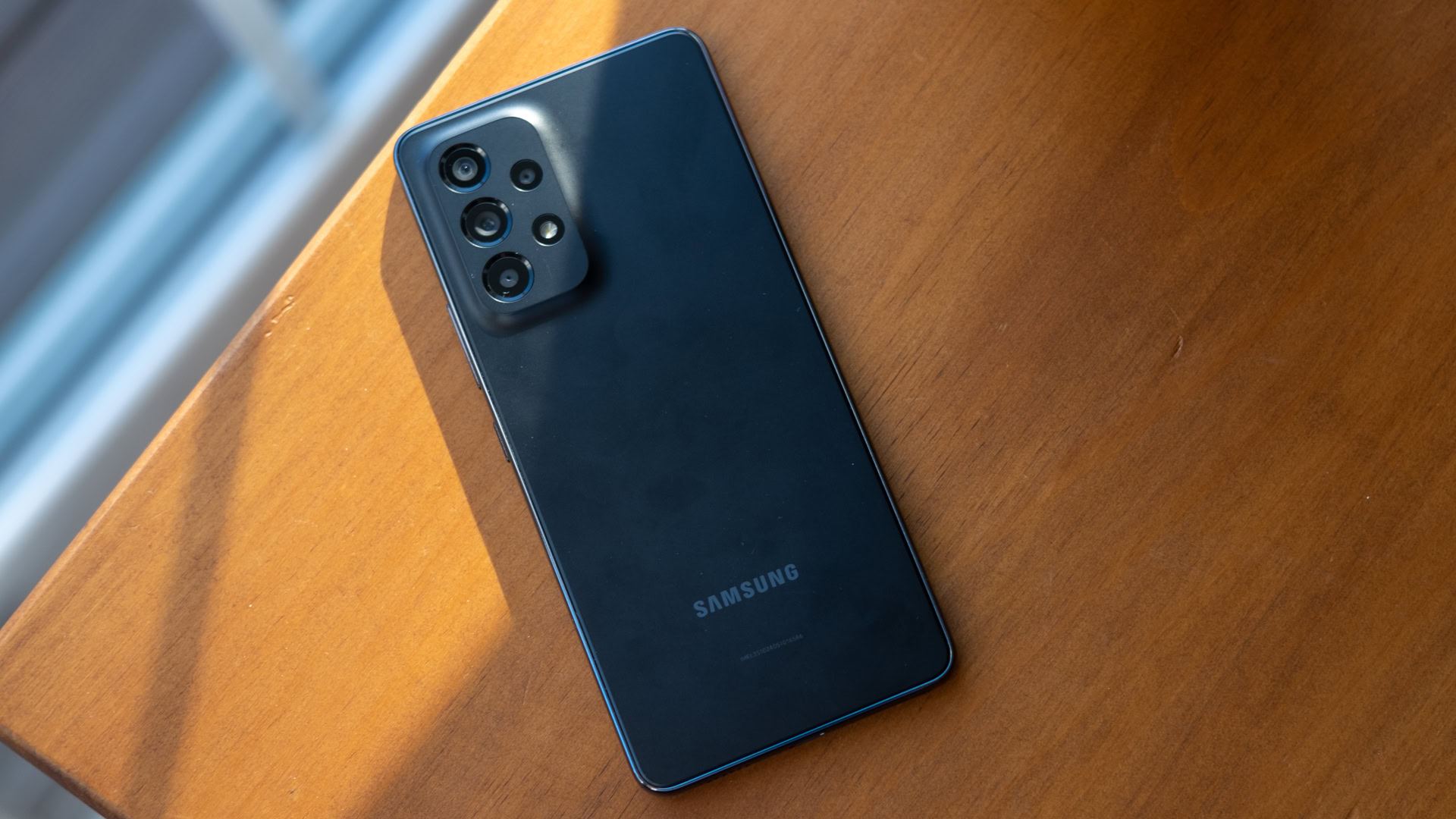
The Galaxy A53 5G doesn’t reinvent the wheel, but it doesn’t have to. Instead, Samsung refined the already impressive Galaxy A52 5G and lowered its asking price by $50. The lower price ends up being the cherry on top because the overall package is one of the most impressive you’ll find for under $500. If you already have a Galaxy A52 5G, there’s not enough new here to consider an upgrade, but if you’ve been looking for a reasonably priced way to enter the Samsung ecosystem, the Galaxy A53 5G is an excellent gateway.
The Samsung Galaxy A53 5G doesn't reinvent the mid-range wheel. Instead, it refines a successful formula at a more affordable asking price.
Samsung’s quartet of rear cameras delivers the goods, both day and night, with the only blemish being the lack of 4K/60fps video recording. The large, 6.5-inch, 120Hz AMOLED display is crisp and smooth, making video streaming enjoyable. You should have no issues pushing the 5,000mAh battery to its limits and it’s not too slow to charge relative to its competitors in the US (outside is another matter). Meanwhile, the Exynos 1280 chipset is far from the most powerful around and may begin to show its age a few years down the line, but it’ll keep pace with your daily needs for a good while. The lack of a headphone jack may also be a sore point for some, but it’s not unexpected these days.
Overall, the Samsung Galaxy A53 5G is an excellent indicator of where the budget phone market is headed. It offers a well-rounded experience that should suit the needs of most users and a price tag that won’t make your wallet hurt too badly. Add in Samsung’s excellent update commitment, and you’ve got an affordable device that’ll stay current long after others have retired.


Samsung Galaxy A53 5G FAQs
Yes, The Samsung Galaxy A53 5G retains the best parts of its predecessor and gives the battery and processor a welcome boost. The Galaxy A53 5G is one of the best Android phones you can buy in the US if you want to spend less than $500. Those in international markets may want to consider the Galaxy A52s, however.
No, the Samsung Galaxy A53 5G does not support wireless charging.
Yes, but you won’t find mmWave support for Verizon’s fastest 5G speeds on the unlocked version. If you’re a Verizon customer, you can pick up a mmWave-enabled version called the Galaxy A53 5G UW, but it’ll cost you an extra $50.
Yes, the Galaxy A53 5G is compatible with LTE networks.
No, the Galaxy A53 5G doesn’t come with a free case in the box. If you’re not sure what type of case to buy, check out some of our favorite brands right here.